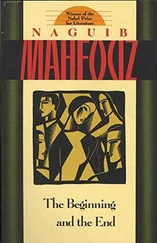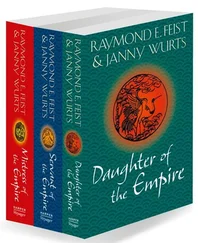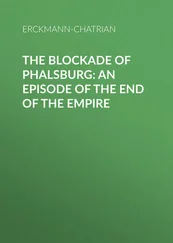Chalmers Johnson - The Sorrows of Empire - Militarism, Secrecy, and the End of the Republic
Здесь есть возможность читать онлайн «Chalmers Johnson - The Sorrows of Empire - Militarism, Secrecy, and the End of the Republic» весь текст электронной книги совершенно бесплатно (целиком полную версию без сокращений). В некоторых случаях можно слушать аудио, скачать через торрент в формате fb2 и присутствует краткое содержание. Год выпуска: 2003, ISBN: 2003, Издательство: Macmillan, Жанр: Старинная литература, на английском языке. Описание произведения, (предисловие) а так же отзывы посетителей доступны на портале библиотеки ЛибКат.
- Название:The Sorrows of Empire: Militarism, Secrecy, and the End of the Republic
- Автор:
- Издательство:Macmillan
- Жанр:
- Год:2003
- ISBN:9780805077971
- Рейтинг книги:4 / 5. Голосов: 1
-
Избранное:Добавить в избранное
- Отзывы:
-
Ваша оценка:
- 80
- 1
- 2
- 3
- 4
- 5
The Sorrows of Empire: Militarism, Secrecy, and the End of the Republic: краткое содержание, описание и аннотация
Предлагаем к чтению аннотацию, описание, краткое содержание или предисловие (зависит от того, что написал сам автор книги «The Sorrows of Empire: Militarism, Secrecy, and the End of the Republic»). Если вы не нашли необходимую информацию о книге — напишите в комментариях, мы постараемся отыскать её.
The Sorrows of Empire: Militarism, Secrecy, and the End of the Republic — читать онлайн бесплатно полную книгу (весь текст) целиком
Ниже представлен текст книги, разбитый по страницам. Система сохранения места последней прочитанной страницы, позволяет с удобством читать онлайн бесплатно книгу «The Sorrows of Empire: Militarism, Secrecy, and the End of the Republic», без необходимости каждый раз заново искать на чём Вы остановились. Поставьте закладку, и сможете в любой момент перейти на страницу, на которой закончили чтение.
Интервал:
Закладка:
From the beginning, Aramco did everything in its power to avoid the arrogance associated with British imperialism in the Middle East. Its employees enjoyed no immunity from strict Saudi laws, and the company worked hard to bring benefits to the underpopulated country, including roads, power plants, and badly needed water wells. It responded quickly when Saudi rulers asked for more money or cooperation on projects of primary interest to them. The United States has always been exceedingly careful about its Saudi Arabian connection. In February 1943, in a letter to Undersecretary of State Edward Stettinius, President Franklin Delano Roosevelt wrote, “I hereby find the defense of Saudi Arabia is vital to the defense of the United States.” 2From World War II on, Aramco also collaborated informally with the Office of Strategic Services—the CIA’s predecessor—and later with the CIA itself. Washington was always kept well informed about Aramco’s view of the Middle East and the world beyond. So long as the CIA had a Board of National Estimates, a retired high-ranking Aramco executive was always a member.
Approximately thirty years ago, Saudi Arabia began to loosen some of these ties. In 1972, it bought a 20 percent stake in Aramco and, in 1980, acquired 100 percent of Aramco’s shares. At the same time, it authorized the Aramco partners to continue to operate and manage the Saudi oil fields. Finally, in 1988, by royal decree and in a remarkably friendly act of expropriation, Saudi Arabia took over the management and operation of all its oil and gas resources. Aramco became Saudi Aramco.
On the basis of this long and extremely lucrative relationship, the United States built the first pillar of its Persian Gulf policy—close ties with Saudi Arabia. Perhaps the high point of American policy in the region, from the Arab point of view, was reached in 1956, when the United States sided with Egypt against Britain, France, and Israel, who had gone to war to stop Egypt’s president, Gamal Abdel Nasser, from nationalizing the Suez Canal. This crisis marked the beginning of British decline east of Suez and earned the United States praise throughout the Middle East. 3In 1968, the British made the decision to withdraw over time from all their outposts east of Suez. The true arbiters of policy in the region during these years were, in fact, the multinational oil companies, which, prior to the creation of the Organization of the Petroleum Exporting Countries (OPEC) in 1960, exerted great influence over both the British and the American governments.
One of our prime political and military concerns has always been to ensure that no other power, friendly or not, interferes with Saudi oil resources. In August 1945, the Army Corps of Engineers began work on an airfield at Dhahran, next door to Aramco’s headquarters. From 1952 to 1963, the United States leased this airfield from the Saudis and based a Strategic Air Command squadron of nuclear-armed bombers there. In 1963, becoming concerned about the size of the American presence in his country, King Faisal ordered the air force to leave Dhahran, which was promptly renamed King Abdul Aziz Air Base of the Saudi Arabian Air Force. The Saudis, however, allowed the U.S. military to use it on a case-by-case basis until the Gulf War, when it was again turned over for operations to expel Iraq from Kuwait. Dhahran proved by far the most important Allied airfield in the American-led 1991 blitzkrieg against Iraq. Of some 7,248 aircraft arriving in Saudi Arabia between August 7, 1990, and March 26,1991,6,755 landed at Dhahran. 4
From 1953 to 1979, the second great pillar of America’s Persian Gulf policy was Iran, then the second-largest exporter of crude petroleum and possessor of the world’s third-largest oil reserves. The British, who had been pumping oil from Iran since 1908, operated the world’s largest refinery there. The Anglo-Persian Oil Company (after 1935, the Anglo-Iranian Oil Company) had provided the British treasury with 24 million pounds sterling in taxes and 92 million pounds in foreign exchange. The British had no intention of seeing their lucrative oil company nationalized, and the American oil majors sympathized with them. So, in 1953, the British gained the cooperation of the new Eisenhower administration in a blatantly illegal plan to overthrow an Iranian government that wanted a fairer share of the country’s oil revenues.
Eisenhower ordered the CIA to help the British protect their assets, and the Americans in turn redefined the Anglo-Iranian oil crisis as a case of “free world” resistance to the threat of Communism in the Middle East. CIA operatives guided Iranian army officers in ousting Prime Minister Mohammad Mossadeq, a patrician politician known for his incorruptible defense of the country’s national interests, and replaced him with the young shah Mohammed Reza Pahlavi, whose reign Mossadeq had interrupted. Although the shah claimed to be a nationalist, he was much more willing than Mossadeq to cooperate with Britain and the United States, seeing them as counterweights to the influence of the Soviet Union on Iran’s northern border. After the successful coup, the new Iranian government awarded concessions to a consortium of major Western oil companies. In this consortium, 40 percent of the shares went to the Anglo-Iranian Oil Company, renamed British Petroleum, and 14 percent to its ally Royal Dutch Shell, thereby ensuring that Britain retained a majority vote. A group of American firms received 40 percent, a reward for American participation in the coup, and the French state company 6 percent. 5
America’s position in the world’s richest oil region thus depended on its close relations with the Persian Gulf’s two largest countries. So long as British military forces were still in place and effective, our government sought bases in the area only for its navy. In 1948, the United States had negotiated an informal agreement with Britain to use harbor facilities of the long-established British naval base (and airfield) at Manama on the island of Bahrain, the largest of the thirty-three islands in its colony Bahrain; in 1949, the U.S. Middle East Force was established there under a navy captain, upgraded in 1951 to a rear admiral. On August 15,1971, Bahrain obtained its independence from Britain, and the United States concluded an executive agreement to retain its naval access in return for a payment of $4 million a year. 6
Before the 1991 Gulf War, the only other territory in the region securely in American military hands was the Indian Ocean island of Diego Garcia. Along with Mauritius, Diego Garcia had been a British possession since England seized it from France during the Napoleonic Wars. The United States wanted to build a naval communications facility there, as Cold War radio and espionage bases in western Australia could not cover the full ocean. In 1965, Britain split Diego Garcia off from Mauritius, setting it up as the “British Indian Ocean Territory” and then “loaning” it to the United States rent-free for fifty years, although it was understood that the Americans would simultaneously waive payment on $14 million worth of Polaris submarine missiles heading for England.
American officials like to brag that Diego Garcia is “immune to local political developments”—for a very good reason. The British deported the island’s entire population to Mauritius and the Seychelles, where they continue to live in conditions of poverty and racial discrimination. London paid Mauritius £650,000 to take the Diego Garcians, but decades later the refugees are still challenging their resettlement before London courts, which have already ruled the deportation illegal. Meanwhile, in 1974, the United States converted its communications station into a fullblown naval base, extended the airport runway to 12,000 feet, deepened the lagoon to accommodate a carrier task force, and stored a thirty-days’ supply of fuel there for ships and aircraft. In 2001, the Department of Defense said that there were more buildings on Diego Garcia than military personnel—654 to be exact—and that the facility had a plant replacement value of $1,917.8 million. 7It served as the main platform for the B-52s that bombed Afghanistan during 2001-02. Late in 2002, the Pentagon built four maintenance hangars at a cost of $2.5 million designed to house as many as sixteen out of the total fleet of twenty-one B-2 stealth bombers. Along with B-52s and B-1s, Diego Garcia’s B-2s led the “shock and awe” bombing attacks on Baghdad on March 22, 2003, dropping 4,200 pound “bunker busters” on the essentially undefended city. It was the first time in history that all three types of American long-range strategic bombers targeted the same place at the same time—an experiment comparable to Hitler’s 1937 bombing of the Spanish village of Guernica. Diego Garcia is 3,340 miles from Baghdad, the farthest away of any of the American bases in South Asia.
Читать дальшеИнтервал:
Закладка:
Похожие книги на «The Sorrows of Empire: Militarism, Secrecy, and the End of the Republic»
Представляем Вашему вниманию похожие книги на «The Sorrows of Empire: Militarism, Secrecy, and the End of the Republic» списком для выбора. Мы отобрали схожую по названию и смыслу литературу в надежде предоставить читателям больше вариантов отыскать новые, интересные, ещё непрочитанные произведения.
Обсуждение, отзывы о книге «The Sorrows of Empire: Militarism, Secrecy, and the End of the Republic» и просто собственные мнения читателей. Оставьте ваши комментарии, напишите, что Вы думаете о произведении, его смысле или главных героях. Укажите что конкретно понравилось, а что нет, и почему Вы так считаете.











